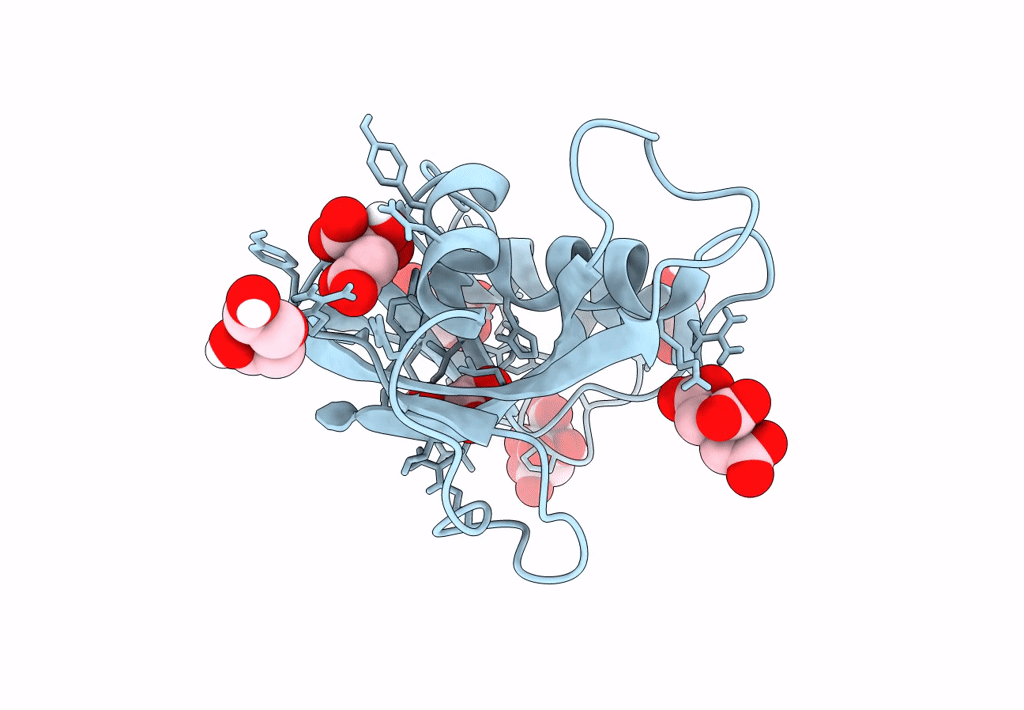
Deposition Date
2022-02-11
Release Date
2023-08-16
Last Version Date
2024-10-30
Entry Detail
PDB ID:
7TY1
Keywords:
Title:
Crystal structure of apo eosinophil cationic protein (ribonuclease 3) from Macaca fascicularis (MfECP)
Biological Source:
Source Organism:
Macaca fascicularis (Taxon ID: 9541)
Host Organism:
Method Details:
Experimental Method:
Resolution:
1.80 Å
R-Value Free:
0.24
R-Value Work:
0.20
R-Value Observed:
0.21
Space Group:
P 21 21 21


